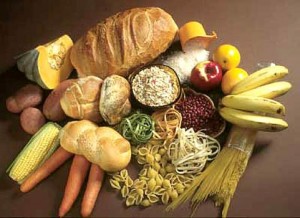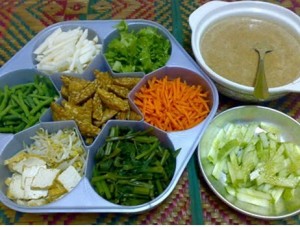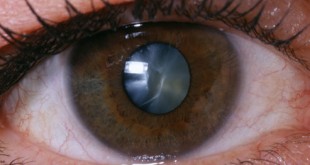Eating Healthy : Tips For Families and Communities
Picking-up Healthy Foods
A well-balanced healthy eating plays a vital role in the control of diabetes. It’s well worth the effort to make “Healthy Eating” as part of our everyday lifestyle. Eating right is important and diabetic diet is a healthy diet for anyone.
Eating a well, healthy diet can :
- Help to attain normal blood sugar, blood lipids and blood pressure.
- Prevent complications from high blood sugars.
- Help to maintain a healthy weight.
- Promote better health through healthy food choices.
Eating Well
The first rule of eating well is to control the quantity and never skip meals. Managing quantity means small amount of everything including lean meat, colorful vegetables, whole grain carbohydrate as well as fruits.
The second rule is to choose the right quality of food. This includes limiting sugar and sweets, limiting high-fat foods such as fried foods and pastries. Besides, eat more vegetables to get fibre and choose whole grain products in daily diet.
The third rule is to eat at regular times at minimum four meals a day at approximately 4 hours spacing.
Carbohydrates in you!
Carbohydrates have a big impact on your blood sugar levels as it provides fuel for the body in the form of glucose. Most of the energy that our body need comes from carbohydrate. It can be separated into two types based on the chemical structure that is simple and complex carbohydrate. Many people still confused about the differences between simple and complex carbohydrate.
Simple carbohydrates or simple sugars
This type will be broken down and digested very quickly. Simple carbohydrates mainly contain refined sugars and very few essential vitamins and minerals. When you eat (or drink) a simple sugar – all of the ingested sugar rapidly rushes into your bloodstream. This is not helpful for people with diabetes. It is because their blood sugar may be currently high and yet to receive the newly absorbed sugar. Example includes white and brown sugars, juices, carbonated drinks, honey, cakes, ice creams and also some traditional desserts. Other simple sugars are also known as fructose, corn syrup, maltose, dextrose and mannitol.
Always remember that hidden source of sugars are also available in many Malaysian’s dishes as they use to add sugar in the food preparation such as sambal nasi lemak, gulai and etc.
Complex carbohydrates
This type of carbohydrate takes longer time to be digested and is actually our body’s preferred source of energy. Normally it comes packed with other healthy nutrients such as fiber, vitamins and minerals. Starches is another terms that is used to describe complex carbohydrate. Always include complex carbohydrate at each mealtime. They also provide lasting energy and help you stay full longer. Examples include all types of rice, breads, cereals, pasta, legumes, flours and the product.
An improved glycaemic control will be achieved by ingesting carbohydrate in consistent amount using either carbohydrate counting technique, exchange or estimation. To sum up, patient with diabetes should focus on the complex carbohydrates and eliminate or reduce simple sugars. Whole grains are encouraged since they play a role in lowering insulin resistance! The key is to watch your portion size. Therefore, people with diabetes have to be smart in choosing the right amount and type of carbohydrates.
( link : Diet For Diabetes Mellitus )
Avoiding Fats!
It is important to choose fat wisely as people with diabetes have greater risk for heart disease. Some fats are unhealthy (saturated and trans fat) and others have health benefits (unsaturated fat). But all fats are high in calories, so you should always watch your portion sizes. The best fats come from plant sources and being liquid at room temperature.
( link : Diet For Cardiovascular Disease & Cooking Tips For Hypertension )
Eating foods lower in unhealthy fat is important to keep that risk as low as possible. Besides, limiting calories from fat will help to lose extra weight in combination with an exercise program.
Tips to choose fat wisely :
- Cook with modified cooking oil, ratio of palm oil to unsaturated oil = 1:2
- Remove visible fat & skin from meat before cooking.
- Limit or avoid the usage of coconut milk and oil.
- Instead of frying, choose to grill, broil, bake, or stir-fry.
- Select lean meats including poultry, fish, and lean red meats.
- Select low-fat dairy products such as skim milk.
- Limit eggs to less than 3 per week inclusive of hidden forms, low cholesterol and omega 3 eggs is encouraged.
- All fruits and vegetables are good low-fat choices. Remember to include fruit and starchy vegetables in the daily carbohydrate count.
Dietary Fibre – An apple a day keeps the doctor away! (Enjoying vegetables and fruits)
Fibre is the indigestible part of plant foods. It helps to delay sugar absorption, increase satiety level, reducing cholesterol and help to reduce constipation. When people eat enough fruit, they have less chance of having a stroke or getting heart disease especially for people with type 2 diabetes. Besides, it also reduce the risk of certain intestinal disorders. Fruits and vegetable provide natural fibres beside important vitamins and minerals.
( link : Diet For Cardiovascular Disease & Cooking Tips For Hypertension )
Vegetables and fruits are healthy for everyone, including people with diabetes. Fill your plate with more vegetables especially the non-starchy one either raw or cooked daily. One cup of cooked or two cups of raw non-starchy vegetables are considered “free foods” because they contain so little carbohydrate and will have a minimal impact on your blood glucose levels.
Eat fresh fruits, or as juice with no sugar added. However, fruits also provide calories from carbohydrate which to be included in the daily carbohydrate count. In addition, avoid fruits and fruit juices that contain added sweeteners or syrups. Furthermore, fresh fruits have more fibre than unsieve juices.
Try to eat a variety of different foods. Think of fruit and veggies as a rainbow and try to eat all different colours. The more colours you choose, the more vitamins and minerals you are getting in your diet.
Protein and Diabetes
Protein food has their role in building tissue and muscles. Among items that fall into this group are meat, chicken, egg, fish, nuts and soy products. Protein food does not contain sugar but watch out for the fat that comes together during cooking.
The American Diabetes Association recommended to choose lean meat or skinless chicken. Removing the skin from poultry will cut down on calories and saturated fat. Fish, naturally low in calories and saturated fat, makes a good choice. Beans and soy-based foods also provide low-fat protein. Plant-based protein sources contain carbohydrates, but poultry, meat and fish do not. People with diabetes should also try to have a meal without meat by replacing them with beans or tofu.
So, eat moderate amounts of protein foods everyday and try to cook them in low fat ways such as broil, grill, stir fry, roast, steam and stew.
Understand Milk
Milk and yogurt are healthy for everyone, including people with diabetes. They contain a lot of protein and calcium as well as many other vitamins. When it comes to dairy products, the standard is that they should be low-fat or fat-free.
Therefore, choose low-fat or non-fat milk products for the great taste and nutrition without the saturated fat. However, milk also contains carbohydrates and calories. So, it has to be included in the daily carbohydrate count.
Remember that you must always look for milk and milk products which has label of no added sugar or sucrose-free if possible.
Beware of High Sodium Food
People with diabetes have greater risk for high blood pressure. Dietary intake of high sodium food can further increase the risk. Therefore, it is important to limit the high sodium food items. Furthermore, a diet which is high in fruits, vegetables, and low-fat dairy products can lower blood pressure.
( link : Diet For Hypertension & Cooking Tips For Hypertension )
Eat Regularly
Towards successful blood sugar control and weight loss, one has to practice regular meals. Timing of meals should be synchronized with medication time actions. Furthermore, our body is better able to regulate blood sugar levels by maintaining a regular meal schedule.
Eating regular small meals in the range of calorie allowed will help to comply with dietary portions. This is because people tend to eat more when skipping meals due to overly hungry. Always start the day with a good breakfast. Try to keep calorie intake the same on a day to day basis. It will have an impact on the consistency of blood sugar level.
Recording everything eaten in a food diary will help one to identify problem areas such as mindless snacking or emotional eating. The enthusiasm has proven for a better blood sugar control and weight loss.
Diabetes and Body Weight
Weight loss is recommended for all overweight or obese individuals who have or are at risk for diabetes. Experts says that by losing just 5% to 10% of total weight, may help people with diabetes to lower down blood sugar, as well as blood pressure and cholesterol levels. Therefore, calorie intake must be adjusted for helping in weight reduction. Furthermore, eating less fat can help to lose weight because it provides higher calories as compared to carbohydrates and proteins. Towards successful weight loss, one has to comply to a weight management programme provided by the experts.
( link : Weight Management )
In addition, physical activity and behaviour modification are also important components of weight loss programs and are most helpful in maintenance of weight loss.
Conclusion
The healthy diet for people with diabetes (type 1 or type 2) is really just a healthy diet from which the entire family would benefit. The only difference is that you need to pay more attention to some of your food choices. The well-balanced healthy diet is vital in diabetic health and there is no shortcut to a good, healthy diet. Healthy eating should be practiced as a part of our daily lifestyle.
References
- American Diabetes Association. Standards of medical care in diabetes (2010). Diabetes Care 2010;33(Suppl. 1):S11–S61
- American Diabetes Association. Standards of medical care in diabetes (2008). Diabetes Care 31:S61-S78, 2008
- Diabetic Food Standards. May 29, 2011 | By Kathryn G (2011, May 29). Message posted to http:// livestrong.com
- International Life Sciences Institute (ILSI) Southeast Asia Region. Role of Carbohydrates in Health & Disease : Evaluating Scientific Evidence for Dietary Guidelines 2006 by Rodolfo F. Florentino.
- Malaysians’ Dietitian Association. 2005. Medical nutrition therapy guidelines for Type 2 Diabetes.
- Nutrition in type 2 diabetes :Gilda Bastasi, P.dt.,CDE ,Telehealth Presentation, March 27, 2007
- Nutrition Therapies for Diabetes: Angela Ginn-Meadow RD LDN CDE, National Spokesperson of the American Dietetic Association, Education Coordinator of Joslin Diabetes Center an Affiliate of MGH
| Last reviewed | : | 03 December 2013 |
| Writer | : | Pn. Hjh. Salha binti Mohamed Nor |
| Accreditor | : | Pn. Siti Mariam binti Tukimin |
 PENDIDIKAN PESAKIT Kementerian Kesihatan Malaysia
PENDIDIKAN PESAKIT Kementerian Kesihatan Malaysia





